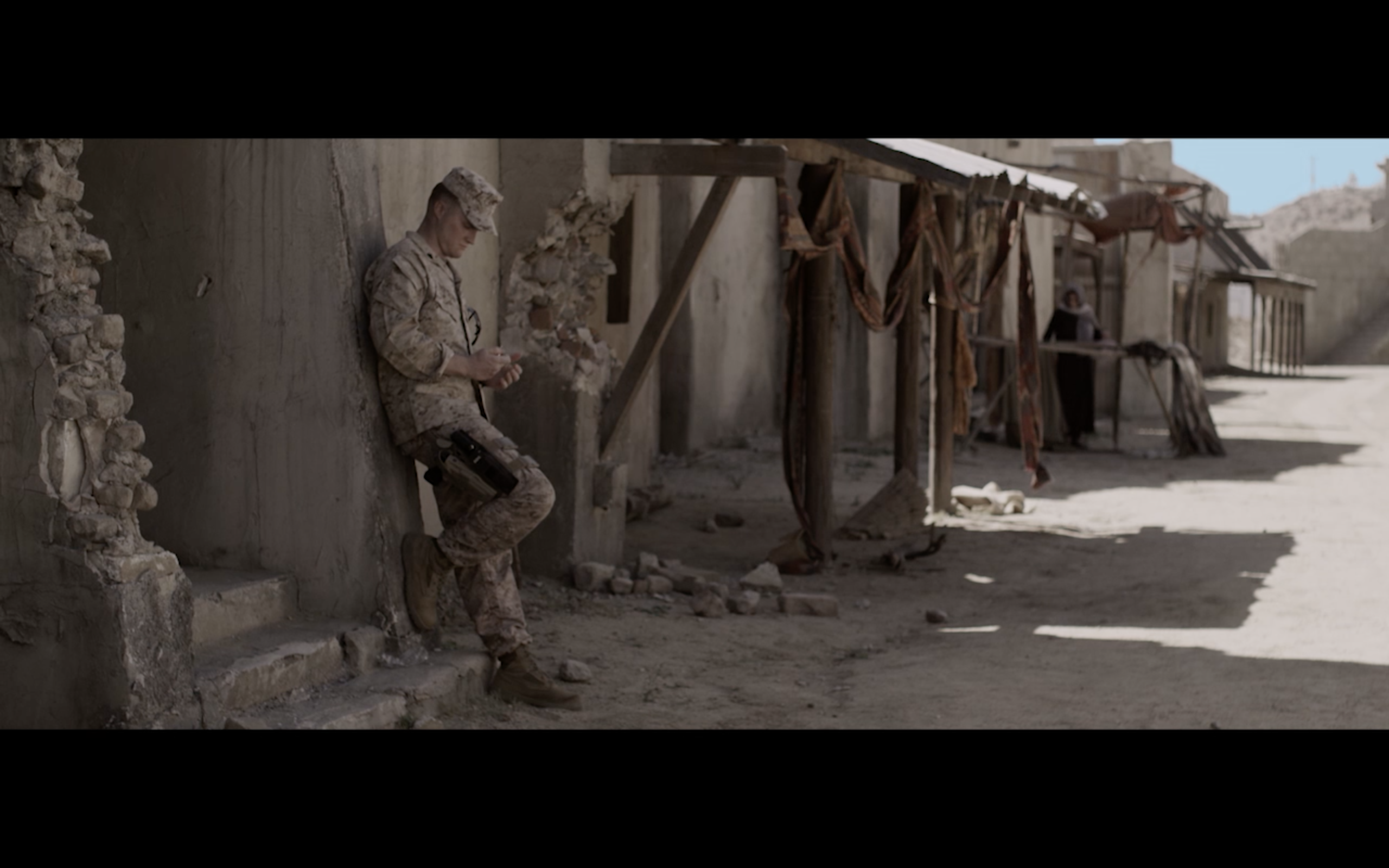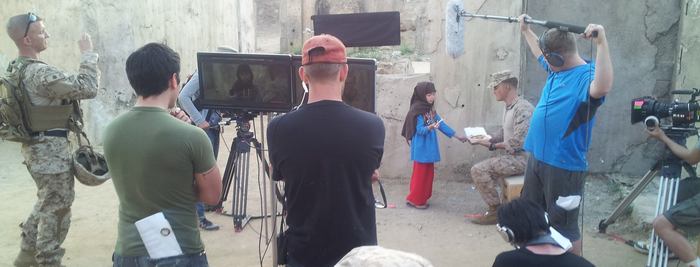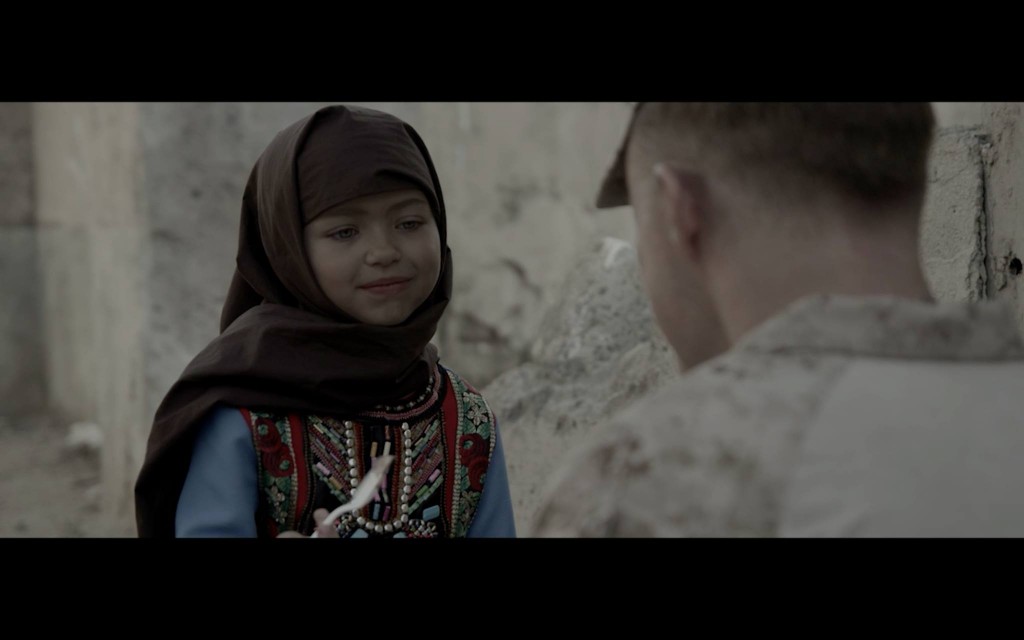WASHINGTON — After leaving the Marine Corps, Regan Young had a gripping story to tell. He just wasn’t sure how to tell it.
But after three years spent juggling night school for film, industry networking and fundraising —all while trying to assemble a reliable crew and hold down a day job— Young finally saw his project come to completion: his short film, “Marza,” based on his experiences serving in Iraq and Afghanistan, played at the military-themed GI Film Festival in Fairfax, Virginia.
Young, 29, served from 2004 to 2012 and left the Marine Corps as a staff sergeant.
His film is about the unlikely friendship between a hardened American Marine and a six-year-old Afghan girl. It was inspired by Young’s own time in Kabul’s Green Zone and the actions of two young girls who died trying to stop a Taliban suicide bomber from getting into the secure area. Today, Young calls those two girls heroes and says that the moment he heard of their roles in preventing the attack, he knew what he had to do.
“It was like a shotgun blast,” Young said. “I turned it into a script because that’s how I knew to channel my feelings.”
Young is one of hundreds of veterans and active service members turning to the big and small screens to tell their stories, honor their fallen comrades and heal past wounds. Many however, lack the technical skills, know-how and Los Angeles connections needed to realize their projects. For the amateur, putting together a movie is a daunting task that comes with a flood of questions: How do I light a scene? How do I get a distributional deal? How do I find actors?
Fortunately, there are more tools and resources for filmmakers —especially military filmmakers— than ever before. It’s a matter of knowing where to look.
Jon Gann, executive director of CINE, a non-profit organization that honors excellence in film, television and digital media, suggests filmmakers keep a few basic rules in mind.
“We want strong, unique and compelling stories,” Gann said. “It’s all about your story. It’s not about that cool crane shot.”
At a GI Film Festival filmmaking panel, Gann said that, while festival audiences may overlook low-quality picture, they are less forgiving about audio.
“Don’t worry about the camera. Worry about the sound,” he told the crowd.
Young, for his part, emphasizes the role of collaboration.
“Don’t try to do everything yourself,” he said. “Reach out. Assemble the right crew and listen to them.”
For Young, that meant reaching out to friends and acquaintances who would act in, light and mic his project for free.
“Find the people that share your passion,” Young added.
Those further along —with a product to show but unsure of what to do with it— face the challenging question of distribution. Online streaming may provide a small trickle of viewers, but for many amateur filmmakers, a film festival is the best bet for a launch.
The GI Film Festival, which just rolled up the carpet on its ninth year, was founded in part as a way to help first-time military filmmakers get their voices heard. The prominence of the relatively young festival was on full display last Saturday night, when screen luminaries like R. Lee Ermey and Dolph Lundgren walked the red carpet.
Besides a screen and a guaranteed audience, film festivals also provide important networking deals. Small-budget indie films like “El Mariachi” and “Clerks” were brought up to the big leagues by studio execs and scouts searching film fests for fresh, innovative voices.
Of course, knowing your audience is important.
“There is a festival for every film, but your film is not for every festival,” Gann said.
Gann, a longtime festival programmer, also rattled off the do’s and don’t’s of the festival circuit.
“We want you to help us market your film,” Gann said, sharing horror stories of filmmakers who showed up to festivals without knowing the log line —one sentence synopsis— of their films.
Gann recommends bringing merchandise and touching base with area radio stations to build a critical level of anticipation and enthusiasm around a project.
“The whole point of a film festival is to build a buzz,” Gann said.
Of course, some ideas are better told through the small screen. Many veterans have found success writing, directing, consulting for and even acting in military-themed television shows on channels like History (“Dogfights,” “Mail Call”), Spike (“Deadliest Warrior”) and Discovery (“Dual Survivor”).
Michael Sorensen, vice president of development and production at Discovery, told a GI Film Festival panel that the ever-evolving nature of TV presented a great opportunity to newcomers looking to break into the industry.
“TV doesn’t stop,” Sorensen said.
Sorenson and co-presenter Brent Hatherill of the American Heroes Channel also stressed the importance of bringing something new and different to the table when pitching to a major television network. Bringing special access or unique talent into the negotiations can only strengthen your position, they said.
And —if you choose to go the TV route— don’t assume that what you bring to the boardroom will be what viewers see on their screens.
“Be malleable,” Hatherill said, echoing the need for shows to “fit” the channel’s audience
Though filmmaking and producing are difficult jobs, the rewards at the finish are often more than worth it. With “Marza” now under his belt, Young is looking forward to new projects, bigger budgets and a new career. He wants to return —as a private citizen— to Afghanistan to see Mursal, the young Afghan girl who was the actual inspiration and “silver lining” behind the title character in “Marza.”
He also hopes to build the short into a feature film, calling the mission a labor of love.
“Those girls were on our side,” Young said. “I wanted people to see that there’s more that goes on over there.”








